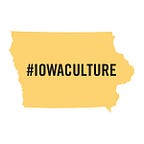For Iowa Pioneers, Heirloom Veggies Were More Than a Passing Fancy
Heirloom vegetables may be the passion du jour among today’s foodies, but they were a way of life for Iowa’s early settlers.
To dig into that history, quite literally, the Western Historic Trails Center in Council Bluffs has planted “The Pioneer Garden,” a living exhibit that shows how pioneers grew vegetables and other plants for survival. So far the staff has planted parsley, rhubarb, rhubarb, radishes, peas, carrots, parsnips, beans and tomatoes.
“For many of us, heirloom vegetable gardening is a hobby or a passion that gives us enjoyment and high-quality produce that tastes good,” State Historical Society of Iowa Sites Manager Jen Bancescu said. “For settlers, however, gardening was a means of survival on the frontier in terms of both growing food to eat and raising medicinal plants, herbs and fragrances they used in the home.”
Iowa’s early settlers typically grew vegetables with seeds they brought from back East or traded with other homesteaders, travelers and native tribes. Gardening chores began in early spring and ran through summer into fall, when they harvested their final crops.
But the green-thumb projects didn’t stop with the first frost. During winter, pioneers spent many hours drying herbs, canning vegetables and fruits, and trading with neighbors.
Like today, Iowa’s early gardeners took great pride in their vegetable gardens, even building their homes and designing their yards to show them off.
“We should have the driveway extend entirely around the house, so that in summer time, when our friends ‘come so far to see us,’ they can see the vegetable garden which should be as much our pride as the corn field,” former Iowa First Lady Anna Larrabee of Clermont said in 1898 Report of the Secretary of Iowa State Agricultural Society.
In the same report, Larrabee added that gardening offered life-lessons for younger family members: “It is from the vegetable garden that we procure food, wholesome and nutritious, and here the children can first learn to assist in the support of the household; and each child should be assigned a portion of the garden, and should be given seeds to plant the same, then encouraged to cultivate, carefully, the growing plants, learning in a pleasant way, lessons of industry, never forgotten. With the vegetable, the choice of milk which we have in abundance, and our friend, Mrs. John Scott’s, book on the Indian corn to consult, one can have a meal fit for a king.”
Some vegetables that Americans enjoy today trace their roots to the 1500s and 1600s, when Long Orange Carrots and Mammoth Melting Sugar Peas first came to North America. Scarlet Runner Beans were introduced before 1800, and Hollow Crown Parsnips, Double Cured Parsley, Victoria Rhubarb, Scarlet White Tip Radishes and Early Large Red Tomatoes were introduced in the mid-to-late 1800s.
All of those varieties are growing in raised beds of the indoor “Pioneer Garden” in Council Bluffs. The staff is tending them with the same tools and techniques settlers used on the homestead in the 1800s.
Stop in and see the progress yourself from 9 a.m. to 4:30 p.m. Thursday through Sunday at the Western Historic Trails Center, at 3434 Richard Downing Avenue in Council Bluffs. Admission is free and open to the public.
— Jeff Morgan, Iowa Department of Cultural Affairs
